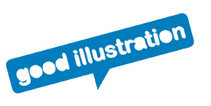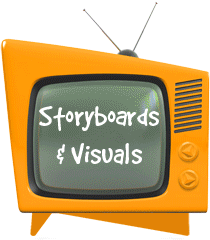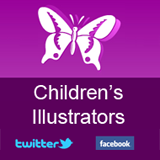How did you enter the world of children’s publishing and can you elaborate on your subsequent rise to the position of Art Director at Macmillan?
My passion has always been for Children’s publishing and I left Bath Academy of Art with a degree in Graphic Design, but a desire to be a children’s illustrator. After taking a mixed design and illustration portfolio to various agencies and publishers, I fell into a general design job, in a small design agency, where I worked for a year. I then moved to London for another general design job, where I did get to design a few adult book covers.
I still really wanted to work in Children’s publishing and when a position at Octopus Books was offered to me, I jumped at the chance. I found myself using my drawing skills visualising book dummies for presentations and designing novelty books on some high profile children’s characters, the likes of Disney and Thomas the Tank Engine.
After three years I moved to Penguin Books where I became Children’s Deputy Art Director. I worked with Janet and Alan Ahlberg, with Roald Dahl and Quentin Blake and on every aspect of children’s publishing across the imprints of Puffin Books, Viking Books, Frederick Warne and Hamish Hamilton. This involved not only working with the publishing greats, but also finding and developing new illustrative talent, which I always found incredibly satisfying.
Six years later I was offered the position of Art Director at Macmillan Children’s Books, and I haven’t looked back since. I have had a fantastic 12 years here, being part of the unprecedented growth in profit and market share of a company that is going from strength to strength. In this time we bought Campbell Books and built it into a market leader for pre-school novelty. We have published, what is universally considered to be a modern day picture book classic, The Gruffalo. I have also been lucky enough to have been involved in some of the most exciting acquisitions of children’s fiction in the shape of the Lian Hearne, Julie Burchill, Frank Cottrell Boyce, Eva Ibbotson and Philip Pullman and the ever successful series Princess Diaries and seen the launch of Young Picador, the cutting edge literary children’s fiction imprint.
I am still commissioning illustrators, photographers and I now oversee 12 enthusiastic and talented designers and feel very privileged to be in such a position.
How many titles do Macmillan publish per year? Of these what percentage are picture books?
Macmillan publish around 240 titles a year across the three areas of Campbell, Picture and Gift Books and Fiction. We publish about 20 new picture books each year.
Of the titles you have been personally responsible for, which one are you most proud of and why?
As I oversee all parts of the list my involvement now is on choice of acquisition, strategy and look of the list. It is a while since I designed a book from concept to completion, I tend to dip into projects with advise and trouble-shoot when problems arise. I consider there has been a small contribution from me on all titles, to a greater or lesser degree on books we publish. I am always seeing and discovering new illustrators and championing them to the various parts of the list. Also my involvement on the Macmillan Prize, the spring-board for new illustrative talent is very exciting and rewarding.
How are Macmillan royalties and advances structured?
Advances
The way these are structured varies from title to title. For texts, it is usually split into two parts (on signature of contract and on delivery of final manuscript) or three parts (on signature of contract, on delivery of final text and on publication). We seem to lean more towards a two part split these days. For illustrations, the advance is usually split three ways – on signature of contract, on delivery and acceptance of roughs and on delivery and acceptance of final artwork. Sometimes, we do make a payment on publication but not very often. For paper engineers, we usually split the advance two ways (on signature of contract and on delivery of the complete and final deadlines).
Macmillan advances are competitive and the amount we offer depends upon a number of factors (e.g. new or established author/illustrator, production costs (particularly on high novelty titles, how commercial the project is etc)
Royalties
Royalties can be based on the recommended retail price or the price received for the book. For UK hardback and paperback publishing, our royalties are generally based on the recommended retail price. For co-ed sales, special sales, export sales, high discount sales etc, our royalties are generally based on the price received for the book (net receipts). Sometimes we do offer an “escalator” whereby the royalty rate increases after a specific number of copies sold.
Again, Macmillan royalties are competitive.
Do you work with many illustrators from outside the UK?
Yes we do, we have built up long standing relationships with international artists like Ingrid Godon, Barbara Nascimbeni and Axel Scheffler and we are constantly scouring the internet for artists internationally.
I also attend the annual Bologna Children’s Bookfair and I have a surgery on our stand and artists are invited to show their portfolios, so I get access to international new talent. I would advise anyone interested in Children’s illustration to go to this Fair as it is truly inspirational and you can sometimes get to show your portfolio to foreign publishers.
What (if anything) would make you not want to work with a particular illustrator?
Because of the movement of designers and editors within the industry, illustrators can get, rightly or wrongly, reputations for lateness on delivery of artwork or being difficult. This doesn’t always sway me, unless it is from personal experience, but it can make one a little wary. But if I love an illustrators work enough, I will try everything in my power to overcome this and put in place a schedule that is workable, but it does rely on the artist being honest about workloads and what is achievable for them.
Do you have a personal favourite picture book?
I have many and for many different reasons, of course I am looking at them purely subjectively, from an adult perspective. but actually I do love the work of Hans de Beer. His work has the ‘ahhhh’ factor for me, without chocolate box sickliness. It is also very accessible for children and of course, putting on my publishing hat for a moment, has been incredibly successful. For different reasons, I also love the work of Michael Sowa, I think his artwork is magnificent and very evocative.
Different again, a title which must be about twenty years old, called “Trouble For Trumpets’ illustrated by Peter Cross, the detail and technique is amazing and he incorporates non-fiction and fiction with lovely characters.
Could you name some of your ‘house’ illustrators and explain why you think their work is so successful?
We do try to use our illustrators across our list, it is good for building the reputation of the illustrator and fantastic exposure in the international markets for them. Nicola Slater (featured on childrensillustrators.com ) is a good example, she started doing the covers for our Princess Diaries series and went on to illustrate the Have You seen Elvis picture book, Nina fairy Ballerina younger fiction series and covers for Olivia kidney.
Again Ben Cort has illustrated a picture book Colour Me Happy, a Campbell title Muddle Jungle with his very accessible, child friendly, painterly, illustration style.
It is hard to pick ‘house’ illustrators because at Macmillan we tend do work closely and develop all our artists and commit to them for the long term.
Within the last couple of years, which children’s book has been the most successful for Macmillan and why?
One of our greatest successes has to be the collaboration between Axel Scheffler and Julia Donaldson on the Gruffalo.
Why has it been so successful…
Well against the odds, given the rhyming text, which we usually try to avoid because it is difficult to translate into different languages, we have in fact sold it into well over 30 different countries! But Axels artwork work is humorous, it has a rich colour palette, fantastic characterisation and married with Julia’s wonderfully clever story, that you can read on different levels, it had to be a runaway success. For Axel as an artist his artwork is adaptable enough to transfer across all age ranges of the Macmillan list, pre school novelty, picture books, fiction covers and line work, a very difficult feat
What three key pieces of advice would you offer to unpublished illustrators reading this interview?
When looking who to approach with your portfolio, do your homework go to book shops and see where you would fit in and target your publishing house accordingly. Be selective with what you put in your portfolio – don’t take too much. When you arrange your meeting, ask the designer what would they like to see and tailor your portfolio.
Do listen to what you are being advised, if the majority of people are giving you the same feedback, then you should probably take it on board.
Have a promo sheet or card to give away even just photocopies, but again don’t have too much.
There isn’t a magic formula for a successful book, otherwise we would have a Gruffallo success every time. The market is always changing, there are different vogues with illustration as well as different publishing houses, having different looks. If you work hard find your niche and keep to deadlines and are realistic as to what you can do, then with talent, and that is important too – you can be successful!
What can we expect from Macmillan Children’s Books in 2006?
We are very excited about our new picture book author and artist Emily Gravitt and have a fantastic publishing schedule already in place for her, starting with ‘Wolves’ and Orange Pear Apple Bear. Emily entered the Macmillan prize in 2004 and won with this book.
Macmillan has been running this prize for the last 20 years and it has been a fantastic spring board for illustrators and a fantastic source of new talent for us. It is open to any student studying graphics or illustration. There is £1000 prize for the winner and cash prizes also for the runners up. We also have an exhibition of all the winning entries and it will be 21 years of the prize in 2006 – so we will also be having a retrospective exhibition at the same time. For the prize we endeavour to, find a new voice, something original, but also good quality illustration for children. Someone who can take a character across 12 spreads showing different emotion, perspectives etc. The panel of judges, of which I have been lucky enough to be one for the last few years, sees approximately 300 portfolios over the judging day. Quite exhausting! We ask students to think about composition, content, the age, audience, colour and presentation.
Also to come out of the prize is Paula Metcalf with Mabel’s Magical Garden and the launch of a very exciting illustrative career and collaboration for Macmillan.
We also have fantastic new novelty books from our Campbell list like Cuddle Books illustrated by Stephen Barker and Playful Pops by Jo Lodge, as well as the continuing success of Lara Jones’ Poppy Cat.
From Fiction we are introducing Jane Blonde – sensational spylet, an inventive debut novel with colourful characters from Jill Marshall.
Aside from their obvious talent, what personal qualities do you look for when choosing an illustrator to work with?
Good communication skills, we need to be involved if there are problems or concerns you have with your project. I need artists to follow the guidelines for preparation of artwork and if there are changes to do then a willingness to take on these comments – there are valid reasons why we ask for corrections, it isn’t just on a whim. We might have got negative customer feedback and if we don’t take action we don’t get your books into the shops.
This interview has been syndicated courtesy of Childrensillustrators.com








